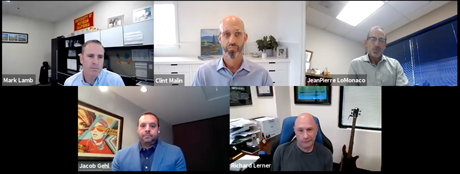Especially when compared to the early days of the COVID-19 pandemic, the U.S. economy is showing some strong results, according to JP LoMonaco of Valuation & Information Group.
There were 60 percent more new businesses started in the first half of 2021 than the same period of 2020, LoMonaco noted. Initial public offerings (IPOs), at 80 per month, are at nearly triple the pace of January 2020. Compared to the pandemic lows of March 2020, the Dow Jones Industrial Average is up 82 percent, the S&P 500 is up 93 percent and the NASDAQ is up 119 percent. Home values increased 35 percent from March 2020 to August 2021.
“This is fueling a lot of speculation for what the economy holds and how it’s going to impact seniors housing,” said LoMonaco. “We’re seeing a lot of strong indicators, but seniors housing definitely has its challenges. The latest thing people are talking about is labor and staffing, as well as occupancy rates that still lag behind the pre-pandemic level.”
LoMonaco’s comments came while he moderated a webinar last week titled “Seniors Housing Valuations Outlook: Fundamental Marketplace Drivers in Today’s Environment.” Other panelists included Clint Malin, LTC REIT; Jacob Gehl, Blueprint Healthcare Real Estate Advisors; Rich Lerner, Housing & Healthcare Finance; and Mark Lamb, CareTrust REIT.
LoMonaco used the economic data and observations of the challenge to set the table for the rest of the panel, asking: “How do you expect your business or your transaction volumes over the next 12 months to compare to historical levels?”
Lerner noted that he expects interest rates to “stay behaved,” meaning continue to hold at very low levels, leading to high numbers of agency financing transactions.
“We’re more constrained by ability to process and the government’s ability to get deals through than supply of product. There’s tremendous demand for places for cash to go. The government printed unimaginable sums of cash over the last two years. China’s a little dicey, Europe’s a little questionable — there’s really nowhere to go other than the U.S. markets.”
Malin said that, at least temporarily, LTC had changed its investment strategy. Rather than buying properties directly, the REIT is more focused on providing structured financing and other short-term investments. The reasoning is that cash flows and profit margins on owned properties have not yet stabilized, meaning it’s too hard to predict and underwrite returns on an acquisition.
“This is a very operationally intensive business,” said Malin. “There is still some uncertainty on what those long-term profit margins are going to be. Plus, REIT stock prices have been a little more constrained.”
As a transaction broker, Gehl at Blueprint noted that transaction volume dipped precipitously at the start of the pandemic, largely due to “conventional capital sources going pencils down. That created a hole in the capital markets.”
However, Gehl reports that more potential sellers than ever are now testing the waters to see what sort of pricing they might expect.
“It remains to be seen how many of those deals will actually come to market. But after having ridden the storm, we have an enormous amount of owner interest trying to get a sense of if the timing is right to sell. There is a lot of seller interest, and a lot of pent-up demand — there are enormous amounts of money on the sidelines, and there’s a shortage of good places to put capital. The next 12 months are going to be a lot more robust than the last 12 months.”
Lamb echoed Gehl’s analysis that there are many more owners testing the waters on selling their properties, “looking to see what pricing will be if they want out.”
“As more and more folks emerge from the pandemic and stimulus starts to slow down, 2022 maybe has the ability to be a very good year,” said Lamb. “We’re cautiously optimistic about what the next 12 months look like.”
To listen to the full webinar, click here.
— Jeff Shaw

